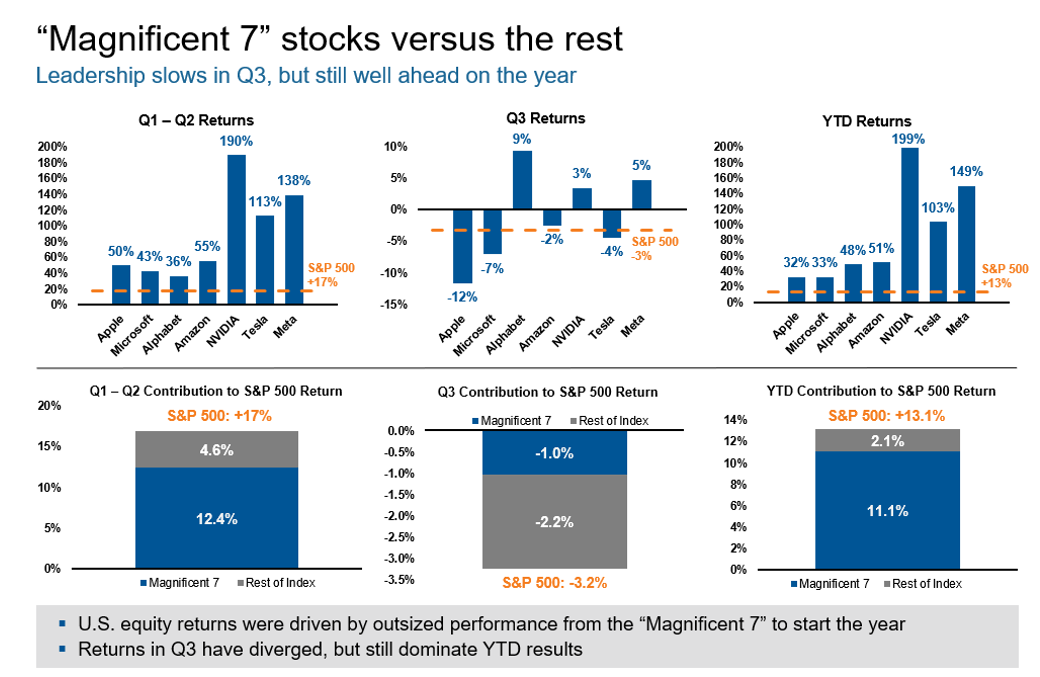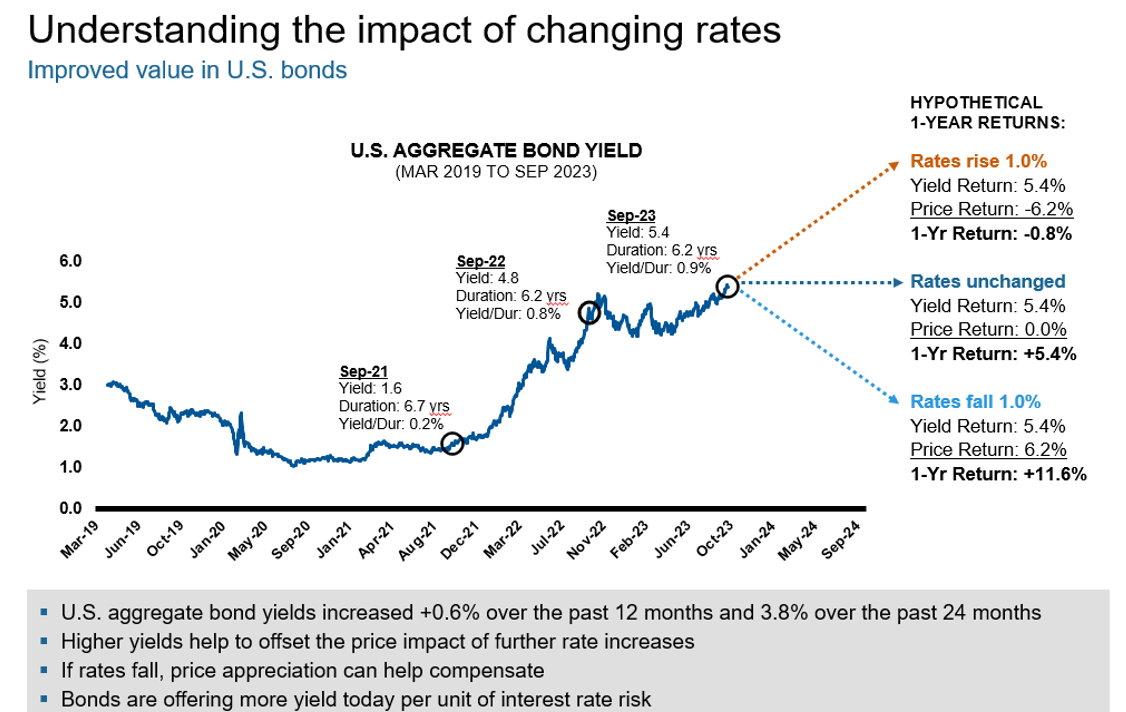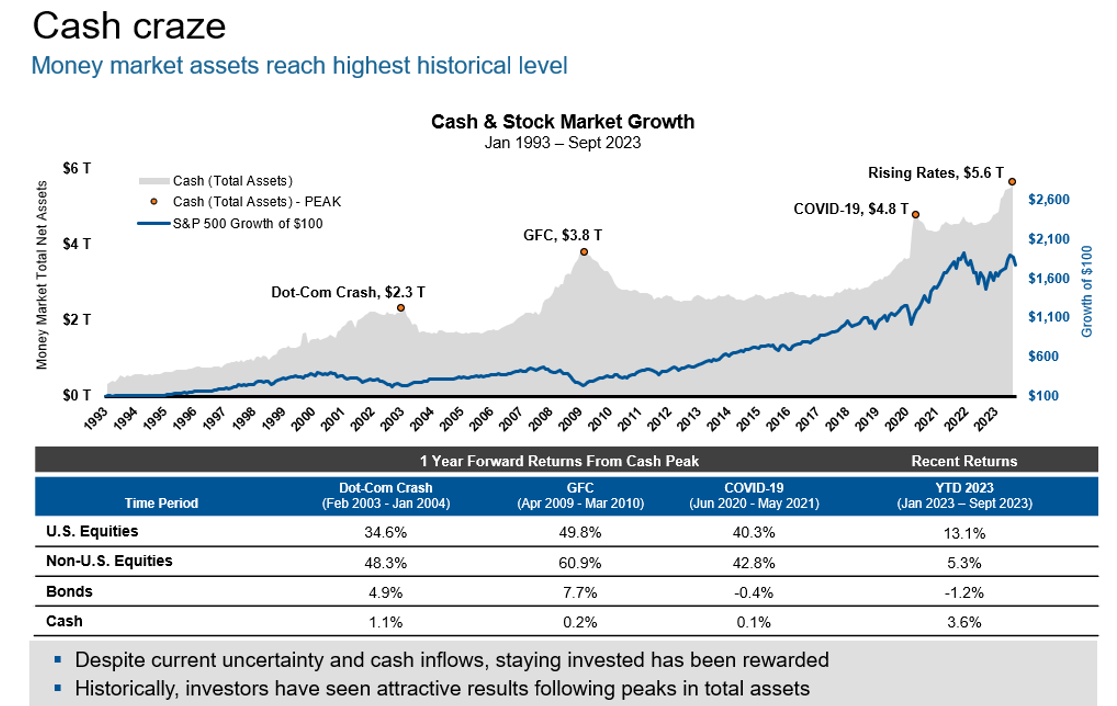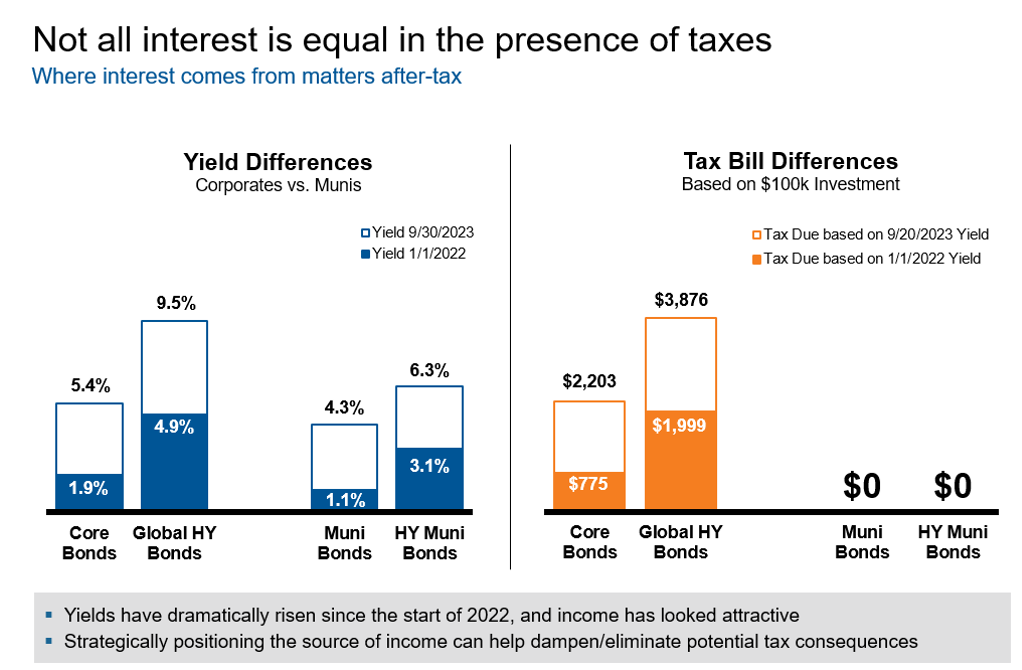Q3 Economic and Market Review: All eyes on the direction of interest rates
Executive summary:
- The direction of interest rates was the biggest factor moving markets in the third quarter
- Sentiment on technology stocks appeared to shift
- Money market assets reach historic high, but returns lag stock market
Every quarter we produce an Economic and Market Review (EMR) in which we delve into the key issues and trends in the markets. We also produce a series of videos with Mark Eibel, our director of client investment strategies, to take a deeper look into some of the more interesting charts we create as part of the EMR.
In this quarterly blog, Mark will discuss some of the slides that we feel are most important for advisors as they help their clients prepare for what lies ahead.
The third quarter of 2023 was a bit of a roller-coaster as the direction of interest rates became the most significant factor moving markets. Formerly high-flying sectors took a pause while other sectors that had been depressed all year did well. For example, commodities had been underperformers all year on the weak economic outlook but did well in the quarter as key oil producers cut supply.
Given these trends, what’s next for investors? Let's take a closer look…
Tax-Efficient Investing
In a rising interest rate environment, it may be helpful to invest with taxes in mind. Did you know that municipal securities can offer significant tax advantages, even if their yields appear lower? The chart below underscores the benefits of including municipal bonds in non-taxable accounts, where they can help create better after-tax returns.
(Click image to enlarge)
Source: Barclays, as of 9/30/2023. Yield = Yield to Worst. Core Bonds: Bloomberg Aggregate Bond Index, Muni Bonds: Bloomberg Municipal Bond Index, Global HY Bonds: Bloomberg Global High Yield Index, HY Muni Bonds: Bloomberg High Yield Municipal Bond Index. Tax bill differences are based on a $100k investment and a maximum federal tax rate of 40.8%, including 3.8% Net Investment Income Tax, and assumes no state tax. While municipal bonds are exempt from federal taxes, they could be subject to state taxes depending on the investor’s specific circumstances.
Technology Stocks and Active Management
Sentiment on technology stocks appeared to shift in the third quarter. The "Magnificent 7" technology giants that had been driving the market earlier in the year faced a tough quarter. This shift created an opportunity for some active managers to outperform. Those managers who had diversified beyond the dominant technology stocks, likely did better in the quarter.
(Click image to enlarge)

Source: Morningstar and Russell Investments. As of 9/30/2023. Alphabet represents combined A&C shares. Index returns represent past performance, are not a guarantee of future performance, and are not indicative of any specific investment. Numbers may not be exact due to rounding. “Magnificent 7” refers to Apple, Microsoft, Alphabet, Amazon, NVIDIA, Tesla and Meta as the largest market cap stocks.
The Bond Market - Navigating Interest Rate Changes
A simple illustration shows the relationship between bond prices and interest rates. When interest rates go down, bond prices go up, and vice versa. In a rising rate environment, the value of bonds can decline. However, with a higher coupon rate, investors can mitigate potential losses. We see government bond valuations as attractive and we believe they have the potential to rally as investors become confident that central banks have finished tightening, inflation has peaked, and economies are slowing.
(Click image to enlarge)

Source: Barclays. Data as of 9/30/2023. U.S. Aggregate Bond: Bloomberg U.S. Aggregate Bond Index. Yield: Yield-to-Worst of the Bloomberg U.S. Aggregate Bond Index. Duration: Modified Adjusted Duration of the Bloomberg U.S. Aggregate Bond Index. Index returns represent past performance, are not a guarantee of future performance, and are not indicative of any specific investment. Indexes are unmanaged and cannot be invested in directly.
Cash vs. Other Investments
Let’s wrap this up on the appeal of cash and cash-like instruments, particularly for emergency funds, as yields have risen. While cash is a safe choice for short-term needs, keeping longer-term investments in cash may not be wise. Investors need to carefully consider when to re-enter the market, and we all know that timing the market is difficult without a crystal ball. Returns from cash-like instruments are unlikely to be sufficient to provide an investor with the portfolio growth needed for a healthy retirement.
(Click image to enlarge)

Source: Morningstar Direct, Total assets as of 8/31/2023 and returns are as of 9/30/2023. Cash: Morningstar Money Market funds. U.S. Equities: Russell 3000 index, Non-U.S. Equities: MSCI ACWI ex-USA Index; Bonds: Bloomberg U.S. Aggregate Bond Index; Cash: ICE BofA US 3M Trsy Bill Index. Index returns represent past performance, are not a guarantee of future performance, and are not indicative of any specific investment. Indexes are unmanaged and cannot be invested in directly.
We like to think that our quarterly Economic and Market review offers guidance for investors and financial advisors. Whether you're looking at what could come next for technology stocks, how you can help your clients navigate interest rate changes, or deciding on the right investment mix, these insights can be a valuable resource for making informed financial decisions in a dynamic market.
